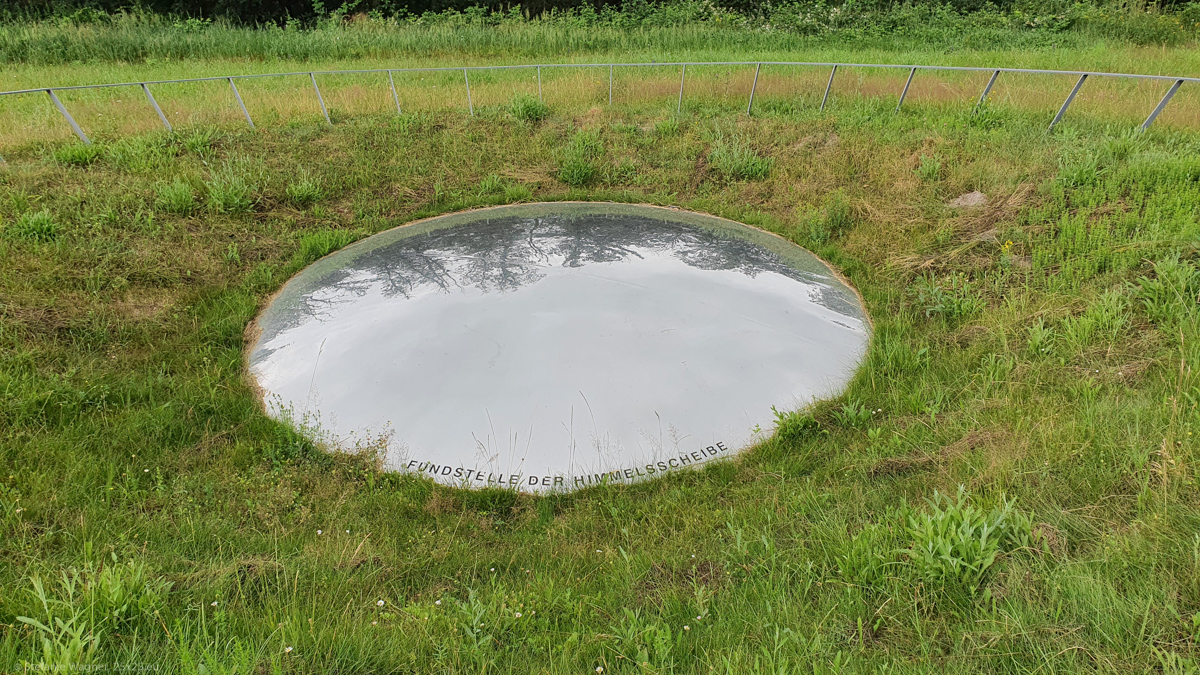Visiting R 78 5
Place of discovery of the sky disc
Just as I described before in the post about the visitor center I am fascinated by the Nebra sky disc. Of course I read about it in the newspapers. This lead to this general interest in it. But when visiting my parents I found a book about it on the book shelve about the background of the discovery. Just its title already gives you an impression of the unusual circumstances (translated, as it is a German book): “Crime Scene Sky Disk: A story about pot-hunters, fences, and scholars”. I read through this one in one go while traveling. Then I found another book from a later date in our local library describing more about the historical background.
It is brilliant how scientist can determine which element of the disc came after which. Where the gold came from. What the various elements on the disc mean. How it has been used as an astronomical tool and then might have turned into a religious instrument. It is more than 3000 years old, dated to 1600 BCE. Looking back into time that much, what an extraordinary accomplishment for those in the past and those today.
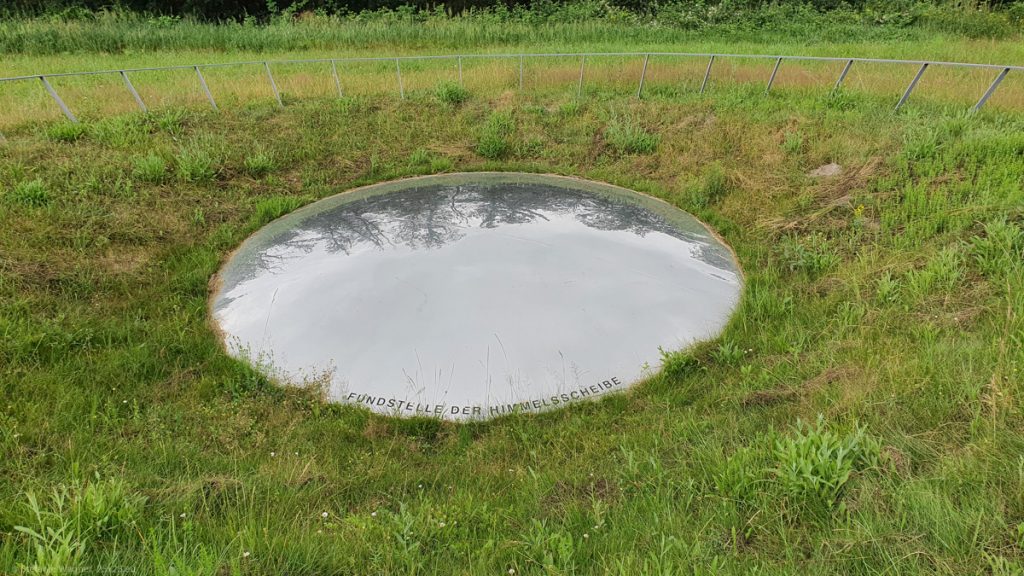
Those days the place of discovery is not a spot in between the trees any longer. The area is cut-over. Interestingly enough this is most probably how it looked at the time of the sky disc. It seems like there was a lot less forest than today in a lot of places in Europe.
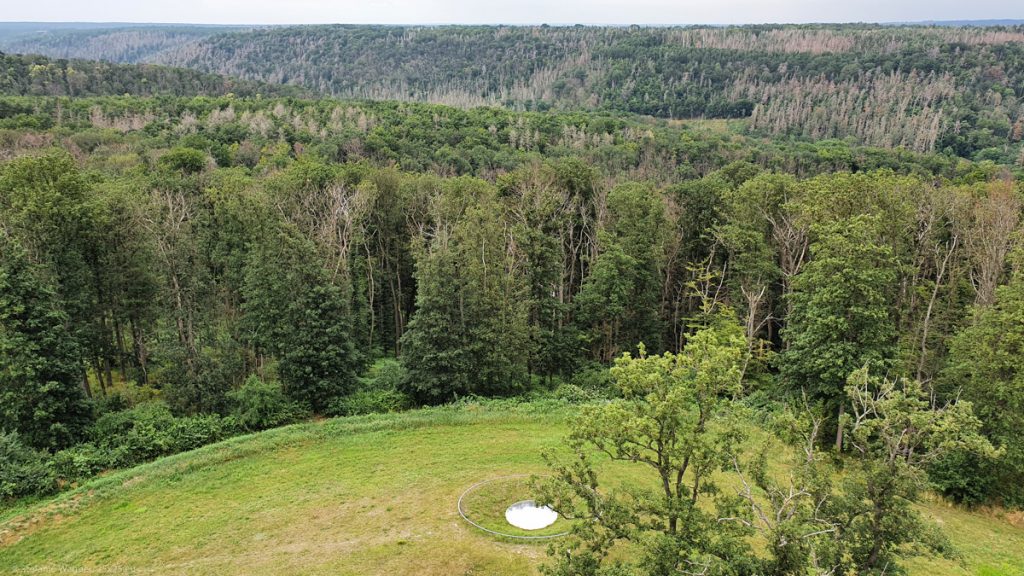
To get a better impression there is a lookout. It is supposed to symbolize the hand of a sundial. Well. Ok. Appreciating the effort. But whatever one might think about the design it offers the opportunity to have a look around.
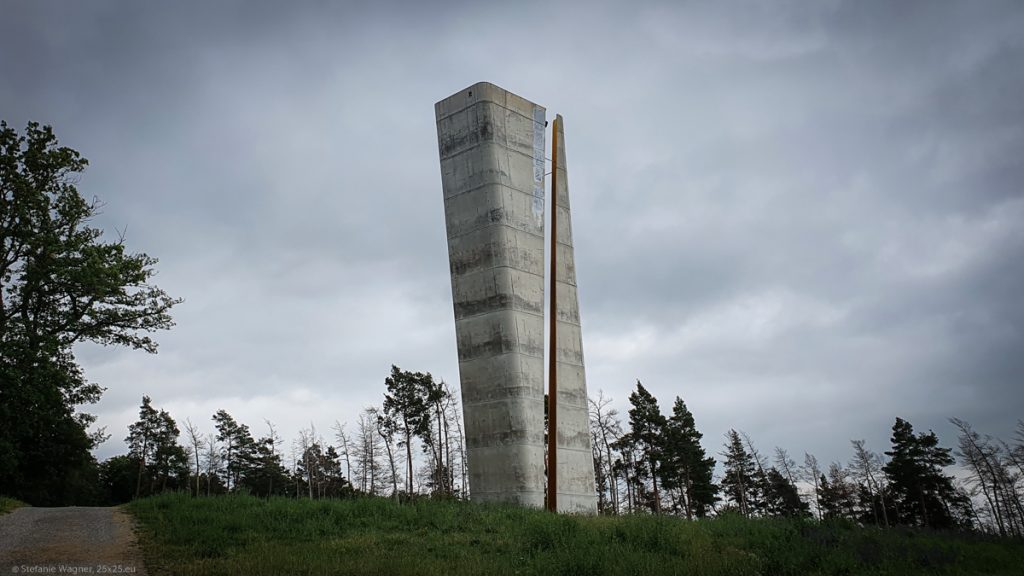
Concrete ribbons in the ground indicate different directions, e.g. where are the different solstices.
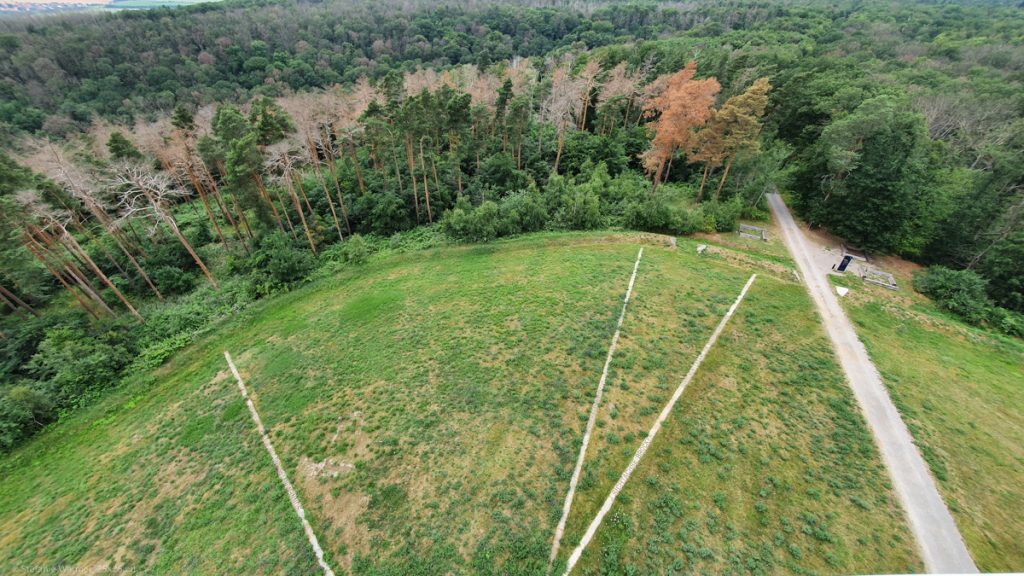
Just a bad time or climate change?
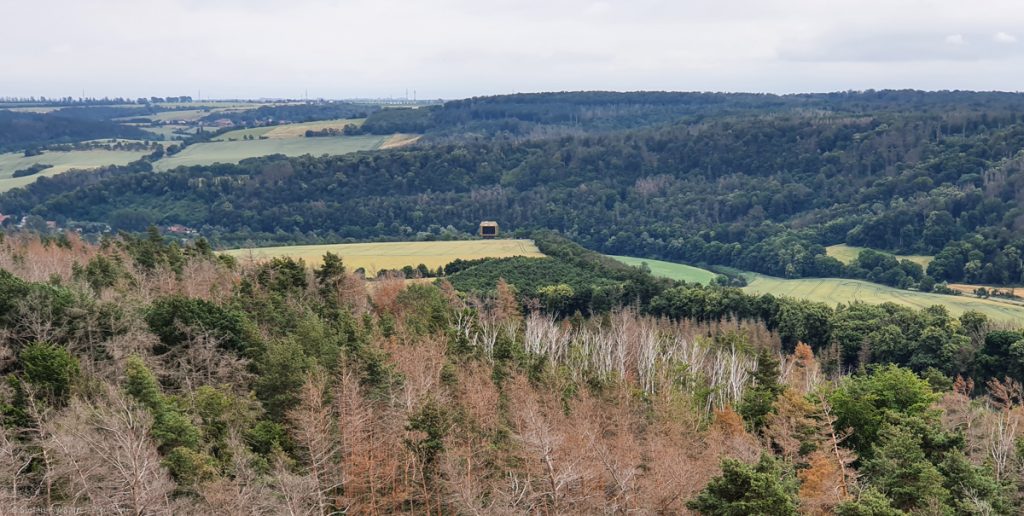
One other thing that becomes very obvious when being on this lookout is that the forest has a lot of brown patches. This is where the spruces have died or are currently dying. News says the trees are suffering from drought stress and the bark beetle.
One dead tree here and there, ok. Even a region having problems because of monocultures, not good, but can happen. However, I have seen those brown areas all over Germany now. It will take time to have other trees take their place. And it will need to be different ones.
The more I travel the more I see such consequences of “unusually” hot summers.
Visiting the dolmen goddess
Imagine you are a farmer working on your land. You dig a little deeper than usual and suddenly you hit a rock. This is what happened in 1987 when they discovered a burial chamber next to a village called Lageneichstädt. One of the top stones had been reused. It shows carvings depicting a goddess. The assumption is that this stone acted as a symbol for fertility for humans, animals, and field crops. Even though reused, “the face” still pointed towards the inside, “looking” at whoever had been in there in former times.

Based on the grave the stone must be at least 5,500 years old. How many treasures are hiding in the ground until today and are just found by chance? Right next to the grave is a tower. Even though it is so close the grave wasn’t discovered when building the tower.
A tower in the middle of nowhere
We went there because of the goddess. But we were surprised to also find an old lookout right next to it. It seems like there used to be some smaller border here in the past. The tower was used for observations and to signal to other lookouts.
As usual the tower doesn’t have an entrance at its bottom but the entrances are way above ground. This way it was more difficult if not impossible for offenders to get inside once the ladder was pulled in.
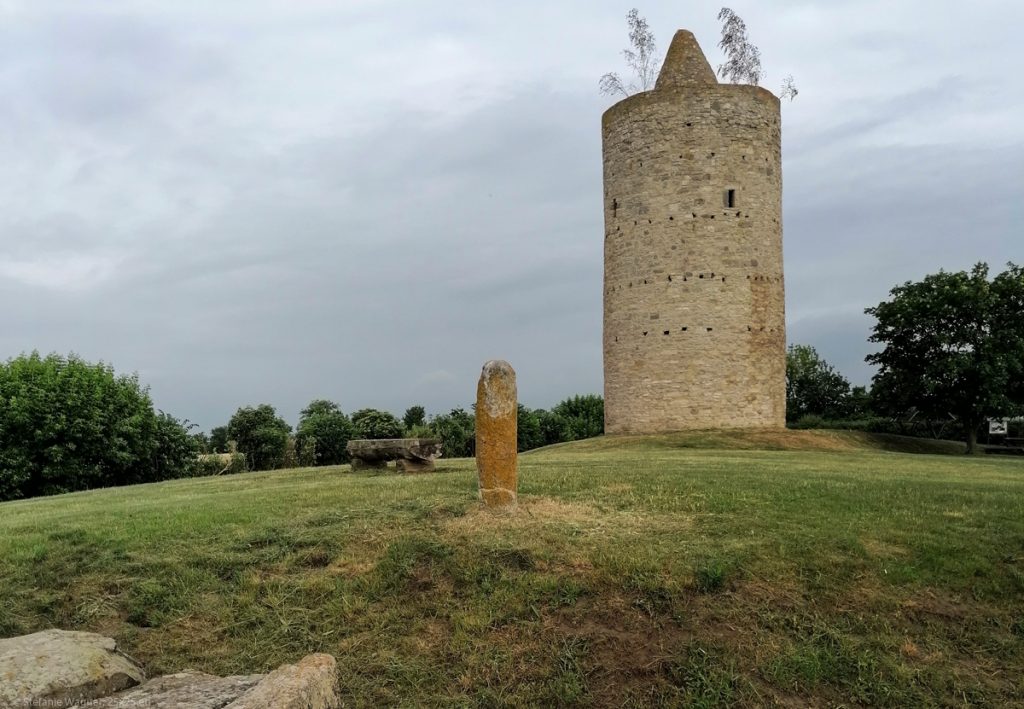
Its masonry technique indicates that the tower is from the 14th or 15th century. The more detailed dendrochronological examinations of a wooden beam assumes that the year of construction could be 1483.

